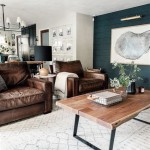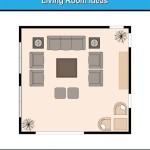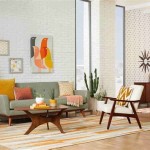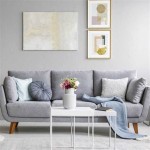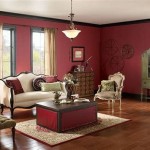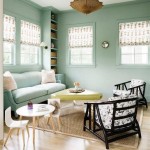White and Gray Rugs for Living Room: A Comprehensive Guide
The selection of a rug for a living room is a significant design decision, influencing not only the aesthetic appeal of the space but also its perceived comfort and functionality. White and gray rugs, in particular, have gained considerable popularity due to their versatility and ability to complement a wide range of interior styles. This article will explore the advantages of white and gray rugs in a living room setting, covering considerations such as design styles, materials, maintenance, and practical applications.
The Versatility of White and Gray Color Schemes
White and gray represent a neutral color palette that readily adapts to various design preferences. The inherent neutrality allows for integration into minimalist, modern, contemporary, and even traditional living room settings. White offers a sense of spaciousness and brightness, reflecting light and making the room appear larger. Gray, on the other hand, provides a grounding element, introducing depth and sophistication. The combination of these two hues creates a balanced and visually appealing foundation upon which to build the rest of the room's decor.
Gray’s versatility extends further, encompassing a wide spectrum of shades from light, almost-white grays to deep charcoal tones. This range allows for nuanced adjustments to the rug's impact on the room's overall atmosphere. A light gray rug can subtly enhance the brightness, while a darker gray rug can anchor the space and provide contrast against lighter furniture or walls. The specific gray tone should be selected based on the desired level of visual impact and the existing color scheme of the room.
White and gray rugs also serve as an excellent backdrop for introducing accent colors. Whether the accents are implemented through throw pillows, artwork, or other decorative items, the neutral rug ensures that these pops of color remain the focal point without clashing or overwhelming the space. This adaptability makes white and gray rugs a long-term investment, as they can seamlessly integrate into evolving design trends without requiring replacement.
Material Considerations for White and Gray Rugs
The material of the rug is a crucial factor affecting its durability, texture, and overall aesthetic. Several materials are commonly used in white and gray rugs, each possessing distinct characteristics that make them suitable for different living room environments.
Wool rugs are renowned for their durability, softness, and natural stain resistance. Wool fibers are resilient and can withstand heavy foot traffic, making them ideal for high-use living rooms. Furthermore, wool rugs offer excellent insulation, contributing to a warmer and more comfortable living space. The natural lanolin present in wool fibers provides inherent stain resistance, although professional cleaning may still be required for certain spills.
Synthetic materials, such as nylon and polypropylene, offer a more affordable alternative to wool. Nylon rugs are highly durable and resistant to wear and tear, making them suitable for households with children or pets. Polypropylene rugs are stain-resistant and easy to clean, often making them a practical choice for busy living rooms. However, synthetic rugs may not possess the same level of softness or luxurious feel as wool rugs.
Cotton rugs are another option, characterized by their affordability and lightweight nature. Cotton rugs are relatively easy to clean and maintain, but they may not be as durable as wool or nylon rugs. They are generally best suited for low-traffic areas or as decorative accents rather than primary rugs in high-use living rooms.
Other materials, such as jute and sisal, offer a more textured and natural look. These rugs are durable and environmentally friendly, adding a rustic or bohemian element to the living room. However, jute and sisal rugs can be rougher to the touch than wool or cotton rugs and may not be as comfortable for prolonged sitting or lounging.
The selection of the rug material should be based on a careful assessment of the living room's usage patterns, aesthetic preferences, and budget constraints. Balancing durability, comfort, and visual appeal is key to making an informed decision.
Design Styles and Patterns in White and Gray Rugs
Beyond the color combination itself, the design style and pattern of a white and gray rug significantly influence its visual impact. A wide range of patterns and styles are available, catering to diverse design preferences and living room aesthetics.
Geometric patterns, such as stripes, chevrons, and geometric shapes, can add a modern and contemporary touch to the living room. These patterns often feature clean lines and bold contrasts, creating a visually dynamic focal point. Geometric rugs can be particularly effective in minimalist or modern living rooms, complementing the streamlined aesthetic.
Abstract patterns offer a more artistic and free-flowing design, introducing a sense of movement and visual interest. Abstract rugs can feature swirling lines, organic shapes, or blended color gradients. These rugs can be a good choice for adding a touch of personality and individuality to the living room, especially in eclectic or bohemian-inspired settings.
Traditional patterns, such as Persian or Oriental designs, can add a touch of elegance and sophistication to the living room. These patterns often feature intricate motifs, floral designs, and rich color palettes. While white and gray may seem unconventional for traditional patterns, they can be incorporated in a subtle manner, creating a muted and refined aesthetic. Using lighter shades of gray and incorporating white as a background color can modernize traditional designs without sacrificing their inherent charm.
Solid white or gray rugs offer a minimalist and understated look, allowing the other elements of the living room to take center stage. A solid rug can provide a clean and uncluttered backdrop, enhancing the sense of spaciousness and simplicity. While seemingly simple, solid rugs can be incredibly versatile, adapting to a wide range of design styles.
Textured rugs, featuring high-low piles, shag textures, or woven designs, add tactile interest and visual depth to the living room. These rugs can be particularly appealing in modern and contemporary settings, adding a layer of cozy comfort. The texture itself becomes a design element, enhancing the overall sensory experience of the room.
Maintenance and Cleaning of White and Gray Rugs
Maintaining the cleanliness and appearance of white and gray rugs is essential for preserving their aesthetic appeal and prolonging their lifespan. White and gray, being lighter colors, can be more susceptible to showing dirt and stains than darker rugs. Therefore, regular cleaning and preventative measures are crucial.
Regular vacuuming is the cornerstone of rug maintenance. Vacuuming at least once a week, or more frequently in high-traffic areas, helps remove loose dirt, dust, and debris before they become embedded in the rug fibers. Using a vacuum cleaner with a beater bar can be effective for lifting dirt from the rug pile, but it's important to adjust the beater bar height to prevent damage to the rug fibers.
Spot cleaning is essential for addressing spills and stains promptly. Blotting the stain with a clean, absorbent cloth is crucial, avoiding rubbing, which can spread the stain. Using a mild detergent solution specifically designed for rugs can help lift the stain. Always test the cleaning solution on a hidden area of the rug first to ensure it does not cause discoloration or damage.
Professional rug cleaning is recommended at least once a year, or more frequently for rugs in high-traffic areas or those exposed to significant dirt and stains. Professional cleaners have specialized equipment and cleaning solutions that can effectively remove deep-seated dirt and stains without damaging the rug fibers. They can also address specific issues, such as pet stains or odors.
Preventative measures can significantly reduce the need for frequent cleaning. Using rug pads underneath the rugs helps prevent slippage and reduces wear and tear. Placing mats at entryways helps trap dirt and debris before they are tracked onto the rug. Avoiding eating or drinking directly over the rug minimizes the risk of spills. Implementing these preventative measures can significantly extend the lifespan of the rug and reduce the frequency of professional cleaning.
For white rugs, special attention should be paid to potential discoloration from sunlight exposure. Rotating the rug periodically can help prevent uneven fading. Using window coverings, such as blinds or curtains, can also help reduce the amount of direct sunlight reaching the rug.
The specific cleaning methods and products used should be tailored to the rug's material. Always consult the manufacturer's instructions or seek professional advice to avoid damaging the rug fibers. With proper maintenance and care, white and gray rugs can maintain their beauty and functionality for years to come.
Practical Applications and Placement of White and Gray Rugs
The placement of a white and gray rug within the living room can influence the overall flow and functionality of the space. Different placement strategies can be employed to define specific areas, create visual balance, and enhance the room's aesthetic appeal.
Defining a seating area is one of the most common uses of a living room rug. A rug can be placed underneath the sofa and chairs, creating a cohesive and inviting seating arrangement. The size of the rug should be proportionate to the size of the seating area, ensuring that all the front legs of the furniture pieces are resting on the rug. This placement helps anchor the seating area and visually define it from the rest of the room.
Creating a focal point is another important function of a living room rug. A rug with a bold pattern or texture can be used to draw attention to a specific area of the room, such as a fireplace or a coffee table. The rug should be chosen to complement the other elements of the focal point, creating a harmonious and visually appealing composition.
Connecting different areas of the living room can be achieved by strategically placing a rug to bridge the gap between different zones. For example, a rug can be used to connect a seating area with a reading nook or a desk area. This placement helps create a sense of flow and continuity throughout the room.
Layering rugs can add visual interest and texture to the living room. A smaller white and gray rug can be layered on top of a larger, neutral rug, creating a layered effect. This technique can be particularly effective for adding depth and dimension to a room with a limited color palette.
The size of the rug should be carefully considered based on the dimensions of the living room and the intended placement. A rug that is too small can make the room feel disjointed, while a rug that is too large can overwhelm the space. Ideally, the rug should extend beyond the furniture pieces, creating a sense of spaciousness and balance.
In open-concept living rooms, rugs can be used to delineate different areas, such as the living area, dining area, and kitchen area. Using different rugs in each area can help define the boundaries and create a sense of organization. While the rugs should complement each other in terms of color and style, they can also be used to introduce visual interest and variety.
The placement of the rug should also take into account the traffic flow in the living room. The rug should be placed in a way that avoids creating obstacles or tripping hazards. Ensuring that the rug is securely anchored with a rug pad can help prevent slippage and reduce the risk of accidents.

Bliss Rug Geometric Indoor Shag For Living Room Bedroom Kids White Gray 8 X 10 7 X10 2

Jonathan Y Modern Persian Vintage Medallion Area Rug

Iliebe Sheepskin Faux Fur White Gray 10 Ft X 12 Cozy Fluffy Rugs Area Rug Ymw Grc1012 The Home

Tigried Ivory Gray 2323 Area Rug Clearance

Latepis 6x8 Sheepskin Rug White With Grey Tips Faux Fur Rugs For Living Room Bedroom Fluffy Washable Luxury Home Decor Furry Shaggy

Orvelte Modern Medium Gray Tan White Area Rug Mark Day

Grey Living Room Rugs Small Extra Large Turkish Floor Carpets Soft Thick Carved Ebay

Gray Modern Rug Ideas For Living Room Abstract Grey Geometric

Atira Gray Checkered Area Rug 5 3 X 7 Rectangle

Sixhome 9 X12 Area Rugs For Living Room Washable Boho Large Rug Modern Geometric Neutral Carpet Soft Bedroom

